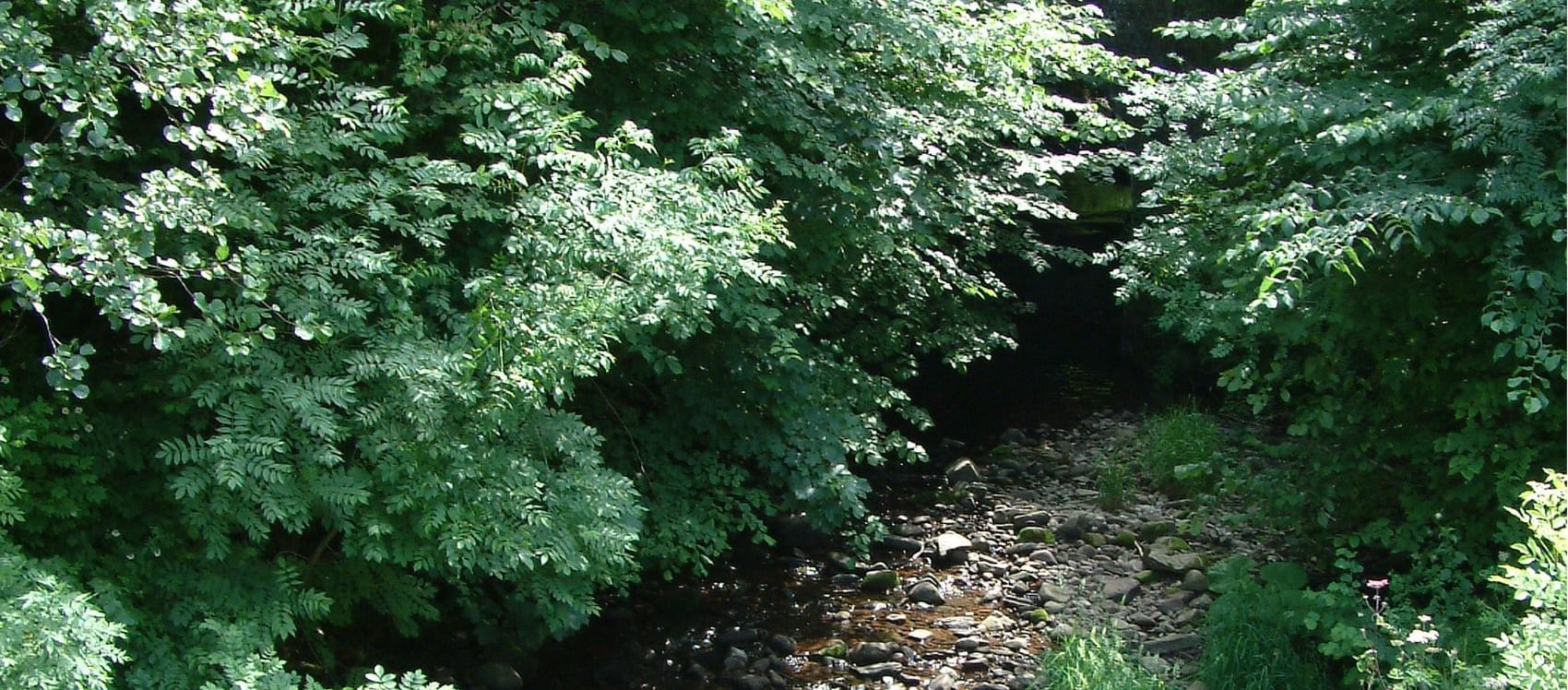
Up until the Second World War, most of the tributaries of the Wye and Usk were rotationally coppiced. The wood extracted was used for charcoal, firewood and clogs.
A collapse in demand for this sort of wood has meant that most riparian trees have remained unmanaged over the last sixty or more years. Multi-stemmed alder have become a feature of many of these streams.
Shading from mature trees gives rise to significant reductions of the numbers of juvenile trout and salmon a stream might otherwise be able to support. Martin O’Grady (1993) found that over shaded streams hold 18% and 22% of the fish of unshaded streams.
At worst, multi-stemmed trees are prone to topple over. Trunks left in the channel can deflect the flow can give rise to very extensive erosion.
The loss of root systems is also likely to cause bank instability. Heavy grazing inhibits new tree growth and together with the effects of shade, contrives to remove the stabilising effects of the annual bank side vegetation.
Thus the essential stream structure is lost and with it, the juvenile fish territories that ultimately ensure good numbers for the next generation of salmon and trout.
For the Foundation there is plenty of reason, therefore, to re-introduce a riparian tree management programme.
Share this page
The Wye and Usk Foundation
The Right Bank, The Square
Talgarth
Brecon
LD3 0BW
The Wye & Usk Foundation is a charity registered in England and Wales (no. 1080319).